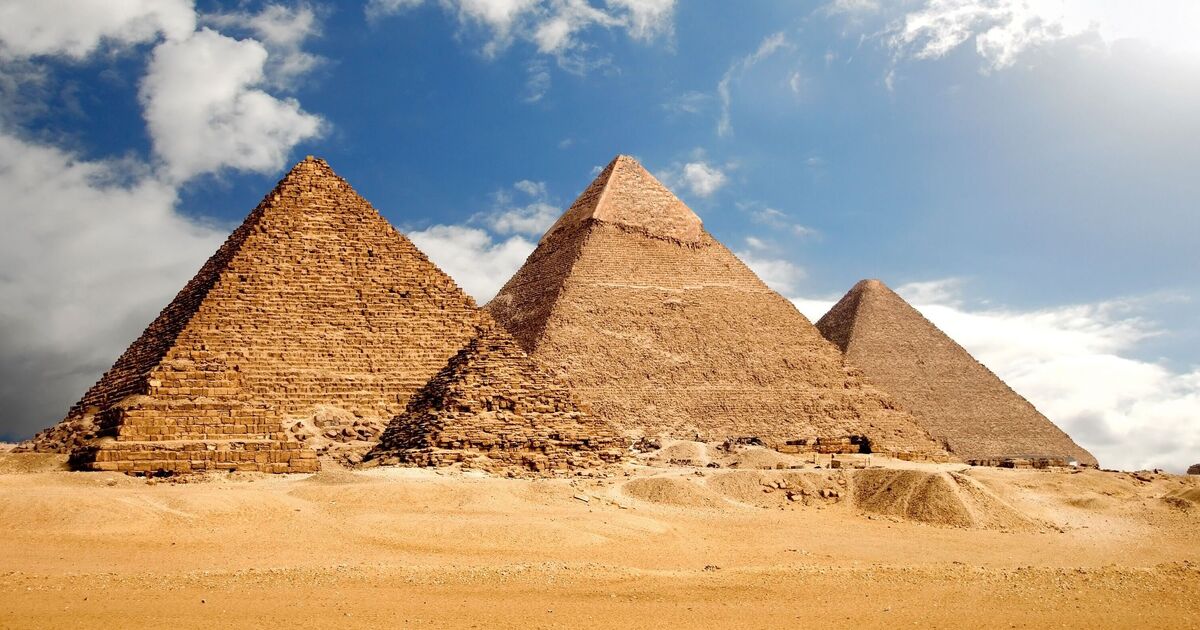Egypt’s iconic Giza Pyramids continue to reveal new secrets just when archaeologists think they have uncovered everything there is to know about the last remaining Ancient Wonder of the World. Researchers from Italy and Scotland have made a “groundbreaking” discovery using radar technology, which shows a sprawling ancient city hidden beneath the structures.
The researchers claimed they had uncovered a “vast underground city” that was 10 times larger than the pyramids themselves and spread across some 6,500 feet. At a press conference in March, Nicole Ciccolo, the project’s spokesperson, said: “A vast underground city has been discovered beneath the pyramids. She said the discovery “could redefine our understanding of the sacred topography of ancient Egypt, providing spatial coordinates for previously unknown and unexplored subterranean structures”. However, some scientists have disputed this claim, which has the potential to rewrite history.
The researchers have claimed they have found numerous structures including eight pillar-shaped formations under the base of the Khafre Pyramid, the second largest in the Giza complex, home to the tomb of the Fourth-Dynasty Pharaoh Khafre who ruled from approximately 2558 to 2532 BC.
The cylindrical wells, referred to by Ms Ciccolo as shafts, reportedly stretch an incredible 2,100 feet below the pyramids. Each is said to be surrounded by spiral pathways which connect two 262-foot cube-shaped structures. According to the spokesperson, they were found below each of the three pyramids and seem to “serve as access points to this underground system”.
They also claim to have discovered five multi-levelled structures connected by passageways, which sit above the eight vertical shafts. As if this were not game-changing enough, some 4,000 feet below the base of the pyramid are said to be even more unknown structures.
“The existence of vast chambers beneath the earth’s surface, comparable in size to the pyramids themselves, which have a remarkably strong correlation between the legendary Halls of Amenti,” Ms Ciccolo added.
However, not all are convinced by the findings. Indeed, the findings by Corrado Malanga, from Italy’s University of Pisa, and Filippo Biondi with the University of Strathclyde in Scotland are still waiting to be peer-reviewed by independent scientists. Professor Lawrence Conyers expressed scepticism, calling it a “huge exaggeration”.
“I could not tell if the technology used actually picked up hidden structures below the pyramid,” he told the Daily Mail. He explained that shafts and chambers are likely all there is underneath the pyramids. The Mayans and other ancient Mesoamericans often built pyramids on top of the entrances of caves or caverns that had ceremonial meaning to them.
Egyptian archaeologist Dr Zahi Hawass also questioned the claims, calling them “completely wrong” and having “no basis in truth”.
Meanwhile, it has been revealed that a tomb recently discovered elsewhere in Cairo may have been the final resting place of a prince who lived 4,000 years ago and has been hidden behind a huge granite door for millennia. The tomb is said to have belonged to Waserif Ra, son of Pharaoh Userkaf, and was discovered during excavations at the Saqarra Necropolis, a mass burial site in the south of the city.

